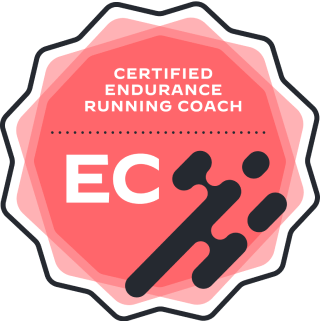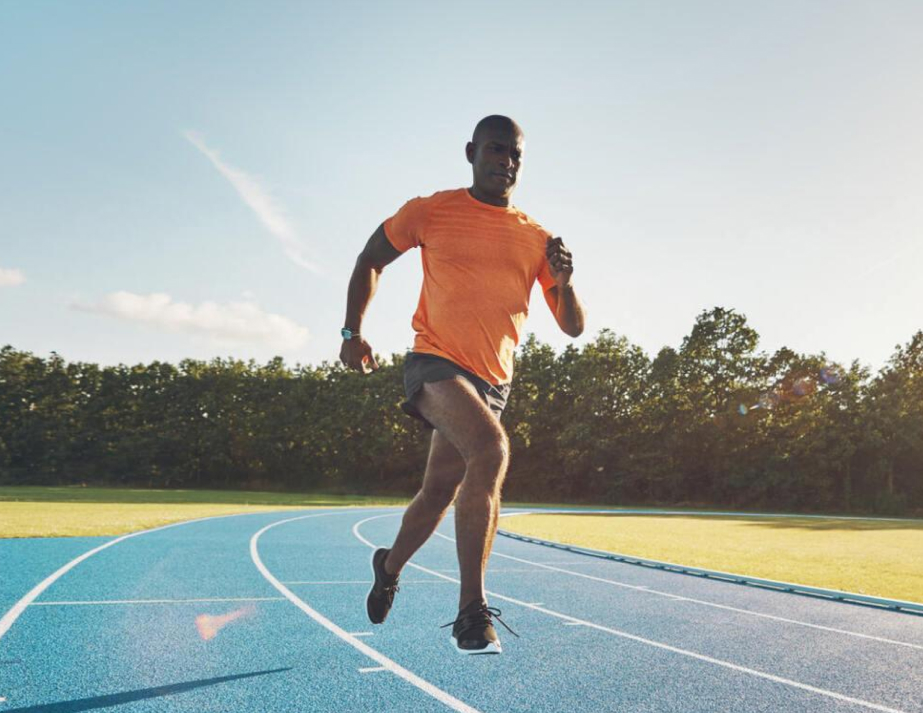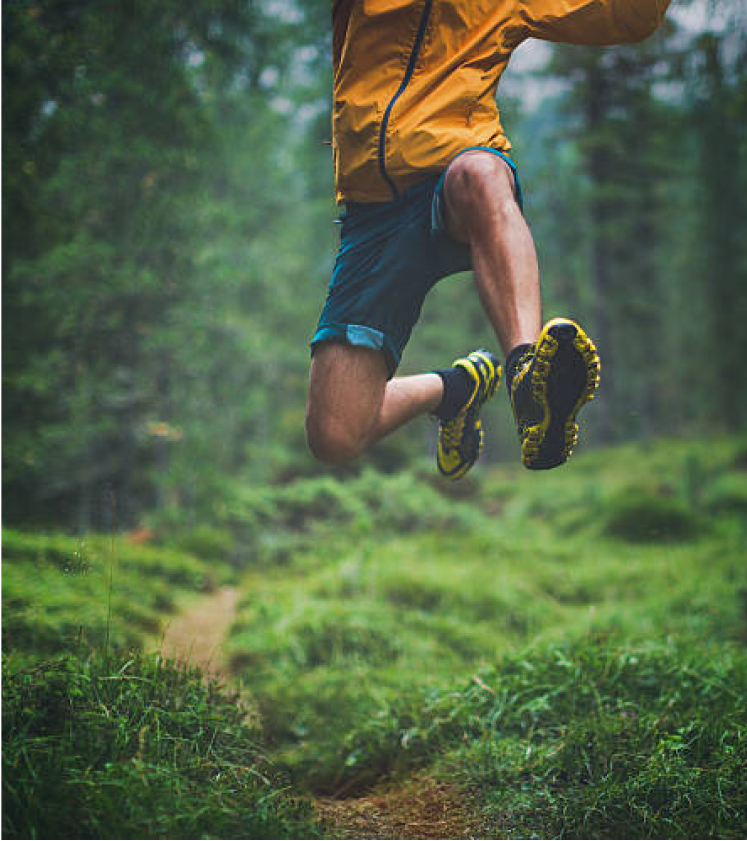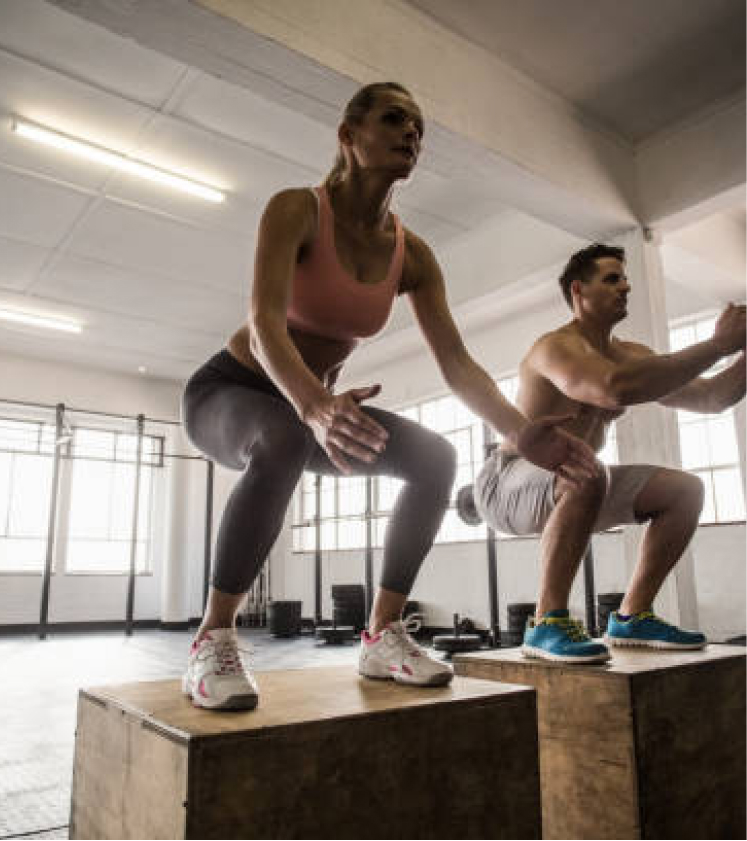
Doug Adams PT, DPT, SCS, OCS, CSCS Dr. Doug Adams is a Physical Therapist who has published and spoken at an international level on all things related to running. Doug has taught thousands of professionals his systematic approach to providing personalized plans for runners through the Certified Running Gait Analyst and Endurance Running Coaching courses. He also designed and created a portable 3D Motion Analysis system called Helix 3D for analyzing and categorizing running form that is used widely throughout the Department of Defense, professional sports, and commercial sectors.
More from DougAre you struggling with how to fix and check running gait?
In this comprehensive guide, we’ll explore expert tips on improving running gait, a crucial aspect for runners aiming to enhance performance and prevent injuries.
A proper running gait improves efficiency and reduces the risk of long-term damage caused by repetitive strain and incorrect form.
Discover how simple adjustments to your running gait can substantially improve your running experience.
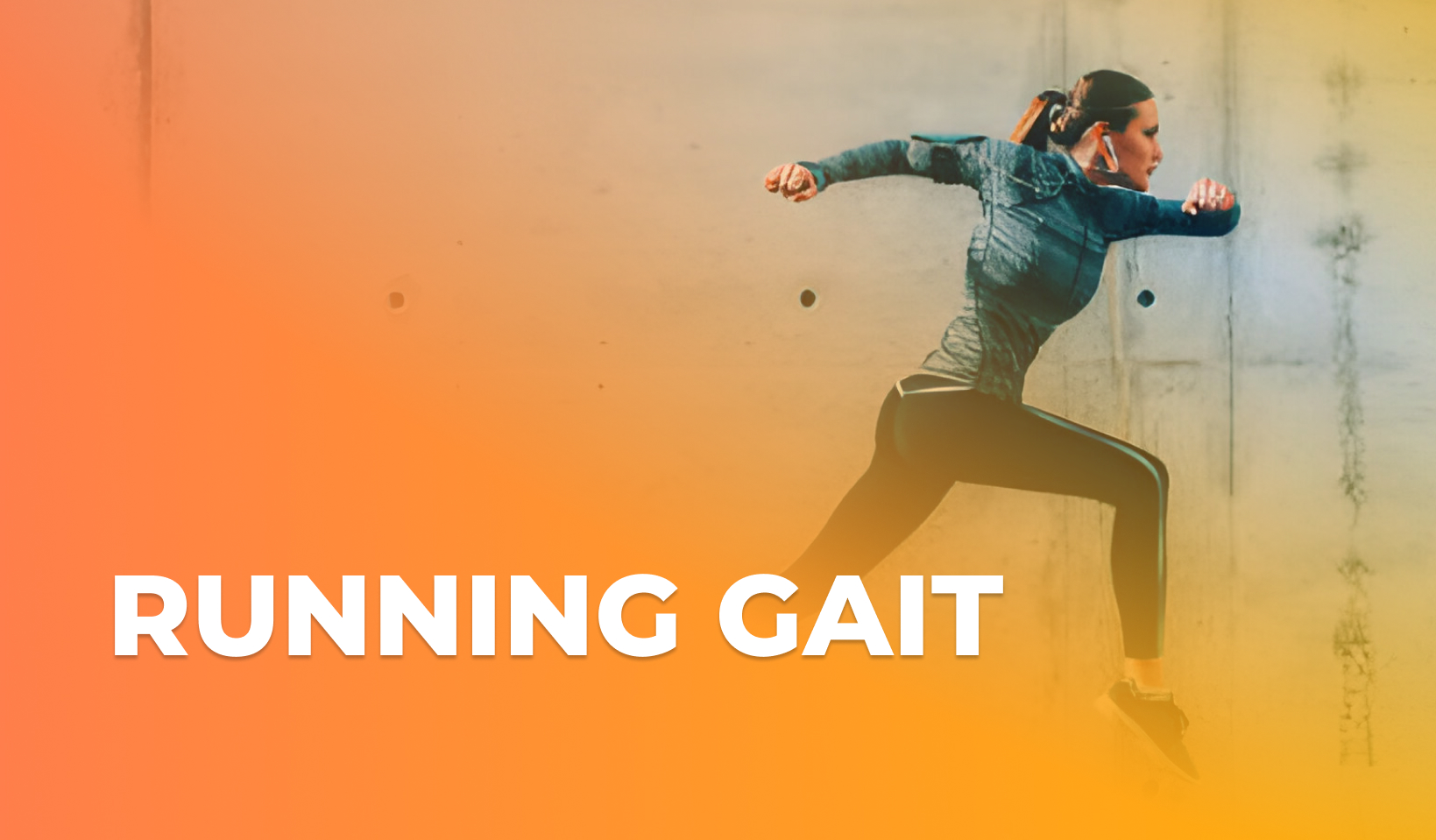
Understanding Your Running Gait
Running gait, or your gait pattern, refers to the way your body moves when you run.
It’s a complex coordination of muscle movements, joint angles, and body posture, all working together in a gait cycle to propel you forward with efficient runner mechanics.
Your gait is as unique as your fingerprint, influenced by your physical structure, strength, flexibility, and running style. It plays a pivotal role in your running performance and is crucial to preventing injuries.
A well-aligned and efficient gait ensures that the force from each footstrike is distributed evenly, minimizing stress on any single part of the body.
This balance is crucial for long-term running health and peak performance.
Common Running Form Mistakes
By addressing these issues, you can enhance your running efficiency, speed, and overall enjoyment of the sport, all while reducing the risk of injury:
- Heel Striking: When your heel hits the ground first during a run, it’s known as heel striking. This can lead to excessive force traveling up your leg, potentially causing injuries like shin splints or knee pain. While some runners naturally heel strike without issue, it can be a sign of overstriding and poor shock absorption for others.
- Overstriding: Overstriding occurs when your foot lands too far in front of your body’s center of gravity. This acts as a braking force, slows you down with each step, and places excessive stress on the lower legs. Overstriding is often linked with heel striking and contributes to running inefficiencies and injury risks.
- Poor Posture: Proper running form is about more than just standing tall. It involves aligning your head, shoulders, hips, and feet, ensuring a balanced stance phase and forward motion. Slouching or leaning too far forward or backward can disrupt this alignment, leading to a host of problems. Poor posture can strain your neck, back, and hips and affect your breathing efficiency.
- Inefficient Arm Movement: Your arms balance and propel your body. Inefficient arm movement, such as excessive side-to-side or overly rigid arms, can reduce balance and rhythm. It can also waste valuable energy that could be better used in your leg movements.
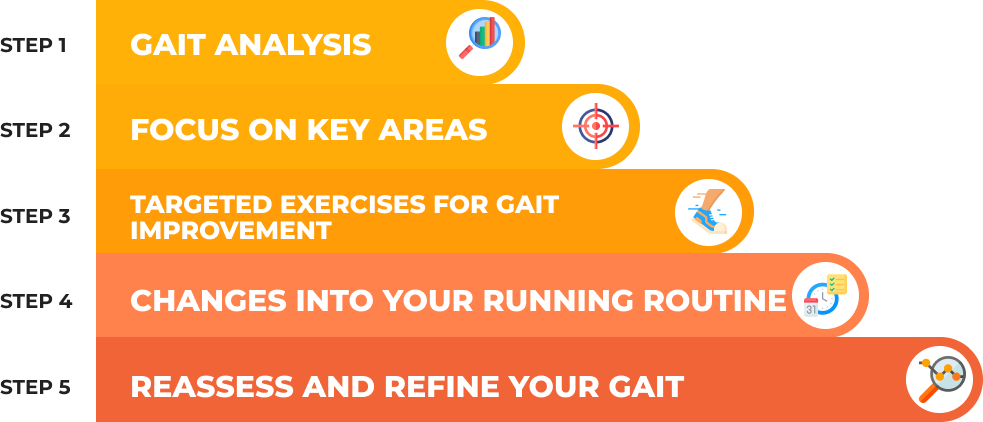
Step-by-Step Guide to Fixing Your Running Gait
By breaking down the process into these steps, improving your running gait becomes a more approachable and achievable goal:
Step 1: Gait Analysis
Think of a professional gait analysis as a deep dive into your running style. It’s like having a running coach who uses science to understand how you run clearly.
A gait analysis involves looking at everything from how one foot strikes the ground to the alignment of your hips and shoulders. This analysis can reveal the hidden causes of those nagging injuries or why you might not hit your desired speeds.
Now, if you’re going DIY, you have to play detective.
Set up a camera and record yourself running.
Look for clues: Are your feet landing way ahead of your body? Do your arms swing wildly?
Step 2: Focus on Key Areas
- Adjusting Stride Length: A stride that’s too long can slow you down and put extra stress on your body. Think about running with a natural and comfortable rhythm, where your feet land under you.
- Correcting Foot Strike: Are you a heavy heel striker, or do you land on your toes? Sometimes, a slight adjustment towards a midfoot strike can reduce impact and improve efficiency.
- Improving Posture and Alignment: Picture yourself running as if a string pulls you up from the top of your head, maintaining proper running form that helps balance one leg while the opposite leg swings forward. This imagery can help maintain an upright posture, ensuring your run is as smooth and efficient as possible.
Step 3: Targeted Exercises for Gait Improvement
- Strengthening Key Muscles: Let’s talk about power. Strengthening your glutes, calves, and core isn’t just for looks; it’s about giving your running form a solid foundation. Stronger muscles mean better support and less risk of injury.
- Drills for Foot Strike and Stride: Focus on exercises that enhance your arm swing and correct running form. Drills like high knees, butt kicks, and skipping aren’t just warm-ups; they’re tools to refine your foot landing and develop the best running form for distance running.
- Stretching for Flexibility: Flexibility is the unsung hero of a good running form. Incorporating dynamic stretches before your run and static stretches afterward can keep your muscles limber and ready for action.
Step 4: Incorporating Changes into Your Running Routine
Before you start running, start small – maybe tweak one thing at a time and see how it feels. It’s about making incremental changes that your body can adapt to comfortably.
Keep a running diary or use an app to track your progress.
Are you more comfortable? Less tired?
This feedback is crucial for understanding what’s working.
Step 5: Reassess and Refine Your Gait
- Ongoing Assessment: Your running form is a living, breathing thing. It evolves as you do, so regular check-ins are essential. As you grow stronger and more experienced, you might find new areas to improve.
- Fine-Tuning for Optimal Performance: This is where you get to polish your running form. It’s about making those minor adjustments that can lead to significant improvements in your performance and enjoyment of running.
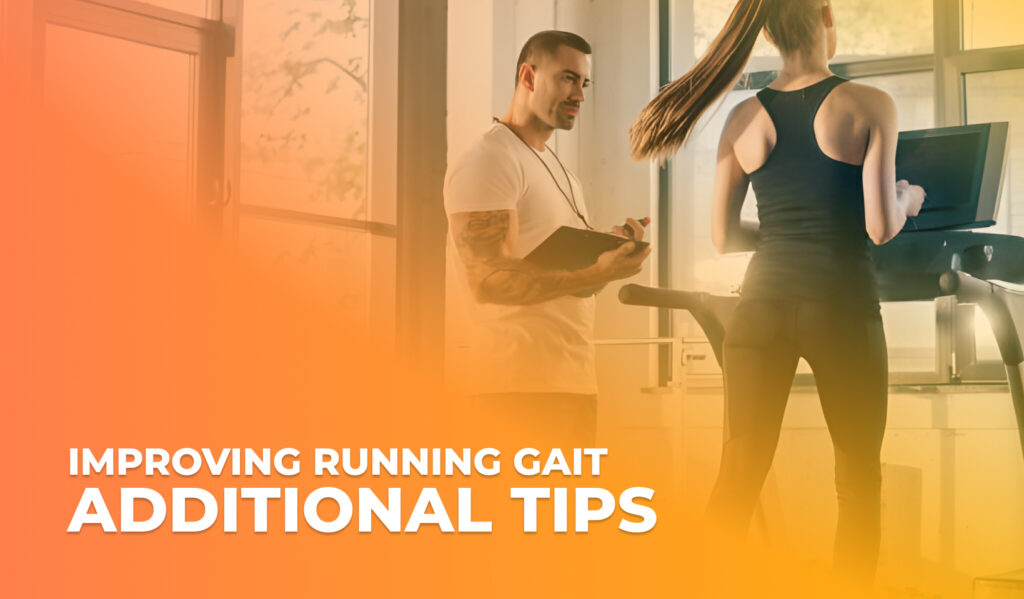
Additional Tips for Improving Running Gait
Perfecting your running gait is continuous; maintaining it requires consistent effort and mindfulness.
Incorporate these tips to ensure your running gait stays healthy and efficient:
- Regularly Check Your Running Shoes: Ensure your shoes provide adequate support and suit your gait type. It’s generally recommended to replace running shoes every 300-500 miles.
- Use Technology Wisely: Apps and devices, like a running gait analysis, that tracks your running metrics can be beneficial. Use them to monitor your pace, stride length, and cadence. This data can help you make informed adjustments to your running form.
- Stay Hydrated and Well-Nourished: Proper hydration and nutrition are essential for optimal muscle function. So, drink enough water and consume a balanced diet of proteins, carbohydrates, and healthy fats.
- Focus on Core Strength: Incorporate exercises like planks, Russian twists, and Pilates into your routine to build a solid core.
- Seek Professional Advice When Needed: If you’re struggling with your gait or experiencing persistent pain, consulting a physical therapist or a running coach can provide tailored advice and exercises. You can also look for gait analysis near your area if you’re experiencing persistent issues with your gait pattern or proper running form.
Step Forward with Confidence: Start Enhancing Your Gait Today
As you refine your technique, consider seeking additional guidance and support. Whether it’s professional gait analysis, personalized coaching, or advanced training programs, the right expertise can make a substantial difference in your progress.
Don’t just learn how to fix running gait alone — start today with RunDNA and see how we can help!



